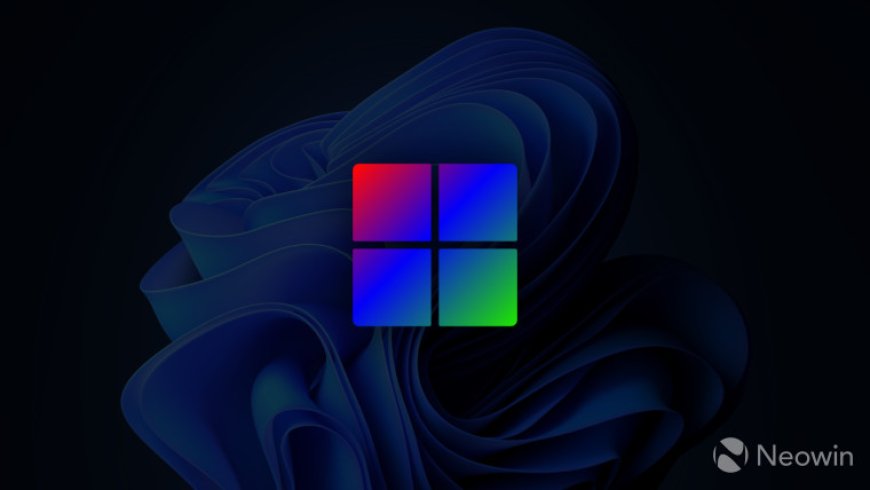Streamlined RGB Control: ASRock Enables Windows 11 Native RGB Controls on Intel and AMD Motherboards
ASRock, a prominent player in the motherboard industry, has taken a significant step towards simplifying RGB lighting control for users of both Intel and AMD motherboards. The company has released a beta firmware that extends support for the Microsoft Dynamic Lighting standard to Windows 11. This move is poised to revolutionize the RGB experience for PC enthusiasts, offering a unified ecosystem for controlling RGB lighting across a wide range of devices. In this comprehensive guide, we will explore the details of ASRock's initiative, the benefits it brings to users, and the potential impact on the PC gaming and building community.

Unlocking the Power of Native RGB Control
ASRock's beta firmware update is compatible with select Intel 600/700 series and AMD B550/X570, A620/B650, and X670 motherboards. This update represents a significant leap forward in the realm of RGB lighting control, as it enables users to harness the full potential of Microsoft's Dynamic Lighting standard within the Windows 11 operating system.
Also check Exploring AI Video Creation with Runway Gen-2
The core objective of this initiative is to simplify the often-confusing landscape of RGB lighting control. Traditionally, RGB setups have been managed through proprietary software utilities provided by motherboard and component manufacturers. This has resulted in a fragmented ecosystem where each device requires its dedicated software, leading to inefficiencies, resource consumption, and a steep learning curve for users.
ASRock's beta firmware, in conjunction with Microsoft's integration in the latest Windows 11 23H2 builds, addresses these challenges by offering a cohesive and native solution. Users can now synchronize RGB lighting and effects across a multitude of devices, including motherboards, graphics cards, gaming peripherals such as keyboards and mice, and audio accessories like headphones and microphones, all within the Windows 11 environment.
Embracing the Microsoft Dynamic Lighting Standard
At the heart of this development is Microsoft's Dynamic Lighting standard, a game-changing approach to RGB control. This open-source standard is designed to bring order to the RGB chaos by unifying the control of lighting devices compatible with the open HID LampArray standard. By leveraging this standard, Microsoft aims to streamline the RGB experience, making it more accessible and user-friendly for enthusiasts and gamers.
One of the primary advantages of Microsoft Dynamic Lighting is its open nature. Microsoft has collaborated with numerous Original Equipment Manufacturers (OEMs) and Original Design Manufacturers (ODMs) to ensure broad compatibility. Given that Tier 1 manufacturers offer an extensive array of RGB hardware, devices, and peripherals, this approach simplifies setup and control for users with diverse RGB ecosystems.
For users who have struggled with resource-intensive and complex OEM RGB control utilities, the advent of Microsoft Dynamic Lighting is a welcome change. It promises to eliminate the need for multiple software applications running concurrently, reducing system resource consumption and enhancing overall system stability.
A Step Toward a More Attractive Windows 11
While the introduction of Microsoft Dynamic Lighting may not be the sole factor driving Windows 10 users to transition to Windows 11, it reflects Microsoft's commitment to enhancing the appeal of its latest operating system. By incentivizing existing users with valuable features like native RGB control, Microsoft aims to make the upgrade to Windows 11 a compelling choice.
In the following sections, we will delve deeper into the specifics of ASRock's beta firmware, the devices and motherboards it supports, and the advantages it offers to PC enthusiasts. We will also explore the broader implications of this development for the PC building and gaming communities.
ASRock's Beta Firmware: An Overview
ASRock's beta firmware represents a pivotal moment for motherboard enthusiasts. This firmware update is a testament to ASRock's commitment to delivering innovative solutions that enhance the user experience. Here are some key aspects of this update:
Compatibility with Select Intel and AMD Motherboards
The beta firmware from ASRock extends support for the Microsoft Dynamic Lighting standard to a specific subset of motherboards. Users with Intel 600/700 series motherboards and AMD B550/X570, A620/B650, and X670 motherboards can now leverage this feature. While support for additional motherboard models may be introduced in the future, this initial selection covers a wide range of users.
Integration with Windows 11
To fully utilize the benefits of this firmware update, users need to have the latest Windows 11 23H2 builds installed on their systems. Microsoft's integration of Dynamic Lighting into Windows 11 is pivotal to the seamless RGB control experience. ASRock's firmware serves as a bridge between the motherboard and the operating system, allowing users to tap into the power of Dynamic Lighting.
Streamlined RGB Control
The central purpose of this initiative is to simplify RGB lighting control. With ASRock's beta firmware and Microsoft Dynamic Lighting, users can achieve synchronization across various RGB-enabled devices. This synchronization extends to motherboards, graphics cards, gaming peripherals, and audio accessories. The result is a unified ecosystem where RGB lighting and effects can be managed from within Windows 11.
In the next sections, we will explore the benefits and implications of this native RGB control solution, shedding light on how it can enhance the RGB experience for PC enthusiasts.
The Benefits of Native RGB Control
ASRock's initiative to bring native RGB control to Windows 11 offers a host of advantages for PC enthusiasts and gamers. Let's delve into these benefits to understand how they can transform the RGB experience.


































